Ectrosia blakei
C.E.Hubb
This species is currently recorded from Queensland’s Burke district near Croydon through to Coen on Cape York Peninsula (CYP), and from a handful of collections from central and north east Arnhem Land in the Northern Territory. A slender annual between 10-45 cm tall when flowering, with narrow leaves arising from the base and along the stems (Fig. 1). The basic flowering units or spikelets are arranged singly along a central stem or along branches arising from a central stem (Fig. 2). The spikelets arise from the flowering stem well above the leaves, are spaced close to each other but with discrete spikelets easily visible or far apart, and held at an angle spreading outwards from the stem (Fig. 2). Spikelets are much longer than most other species in the genus, 15-20 mm long (excluding awns), and very narrow, 1.4-2.2 mm wide, with a length to width ratio (l:w) greater than 7. Each spikelet contains 9-11 florets (modified grass flowers) which overlap (Fig. 3). The spikelets are laterally compressed, i.e. flattened along their sides. The lemma, the dominant visible structure of the floret (Fig. 3), is often purple tinged, the lemma tapers into a distinct awn/bristle giving the tip of the spikelet a spiky appearance, the longest awns are as long or longer than the spikelet.
Botanical Description
Annual. Flowering culms 10-45 cm high, stature slender, erect. Leaf blades 1-2.5 mm wide and hairy or glabrous. Inflorescence an open panicle 5-10 cm long, 4-8 cm, spikelets spreading, close together or far apart. Spikelets of 9-11 overlapping florets, 15-20 mm long (excluding awns), 1.4-2.2 mm wide. Glumes paired at base of spikelet, lower glume 3.5-4.5 mm long, upper glume 4.5-5.2 mm long (Fig. 3). Basal lemmas 5-7 mm long, tapered to sharp point or awned (Fig. 3), lemma awns longer on upper florets, awns 1-18 mm long.
Diagnostic Features
As a general guide Ectrosia species are usually purple tinged, have awned lemmas and do not grow above 60 cm (around knee height). Ectrosia blakei is one of two species distinguished by very long thin spikelets (at least 12 mm long), with a spikelet length to width ratio of greater than 7 (Fig. 2 & 3). The second species with long thin spikelets, Ectrosia danesii (Fig. 4 & 5), can be difficult to distinguish from E. blakei. Ectrosia danesii may have longer spikelets than E. blakei, between 12-30 mm long and shorter awns, up to 5 mm long, however, there are regions of overlap within these dimensions that match both species. Experts report that E. danesii has a unique characteristic in which the stem of the spikelet (or rhachilla) is sharply bent below the top few florets (Fig. 5) compared to not bent in E. blakei (Nightingale et al. 2005). Ectrosia danesii is also reported to have axillary inflorescences where the flowering head emerges close to the leaf blades (Fig. 5).
Natural Values
One of a suite of annual grass species providing diversity within the ground layer of savannah woodlands.
Habitat
Recorded from Cape York Peninsula (CYP) between Coen and Croydon, and from central and north east Northern Territory (Fig. 6). Found in open woodland communities in a variety of substrates but commonly recorded growing in sandy soils in low lying areas, creek lines, plains, slopes and plateaus.
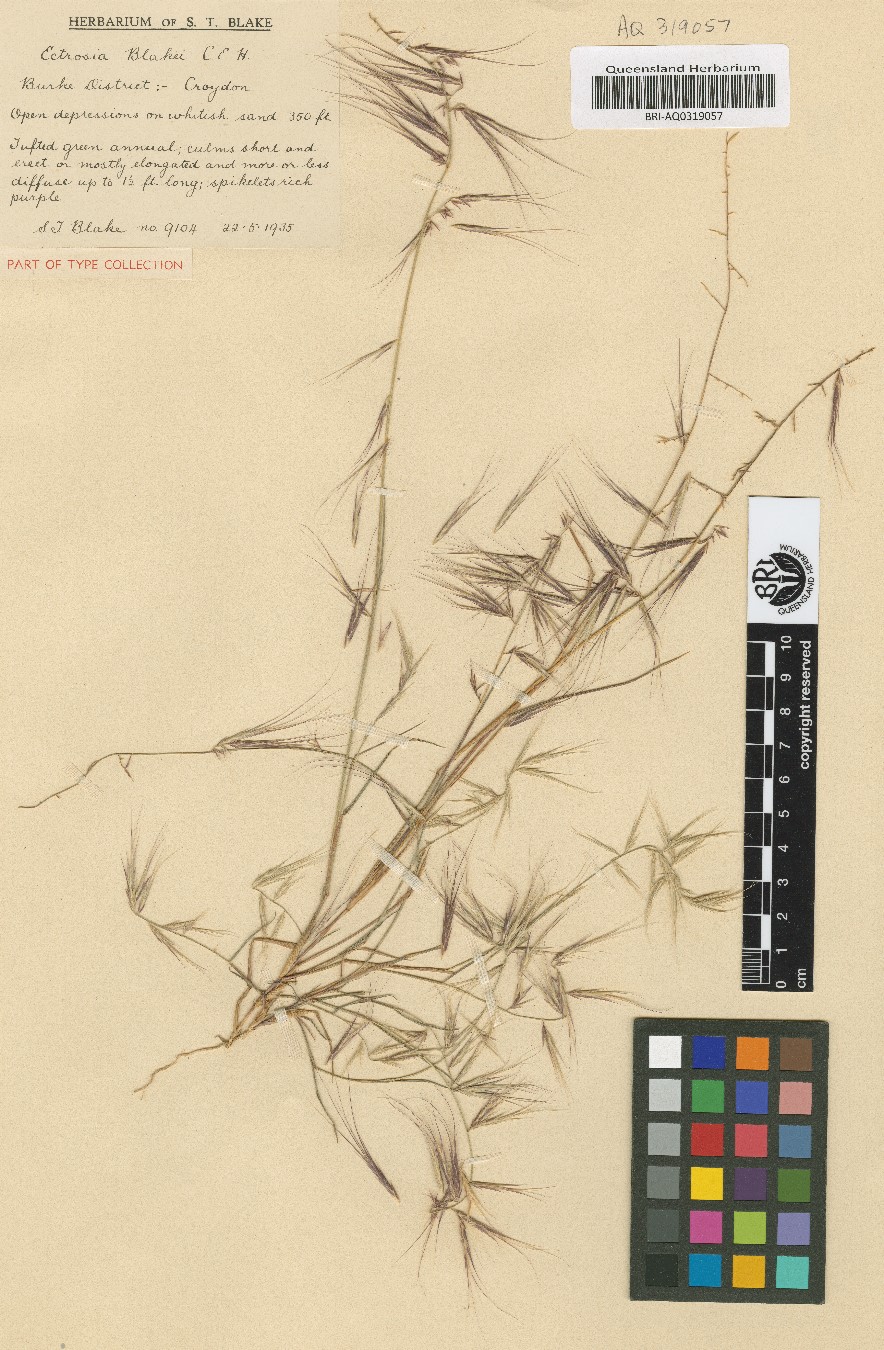
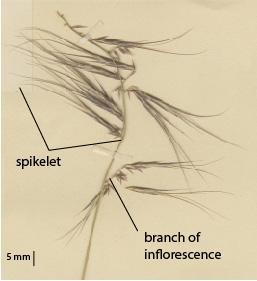
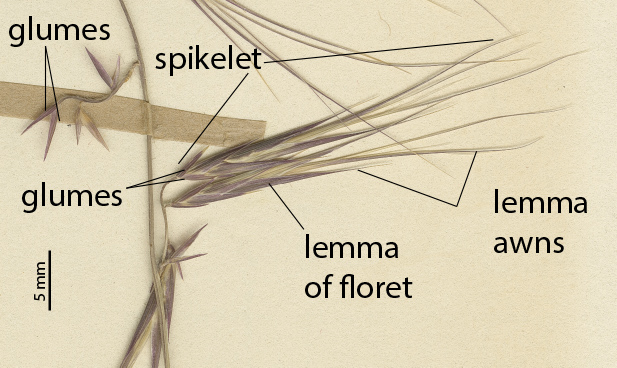
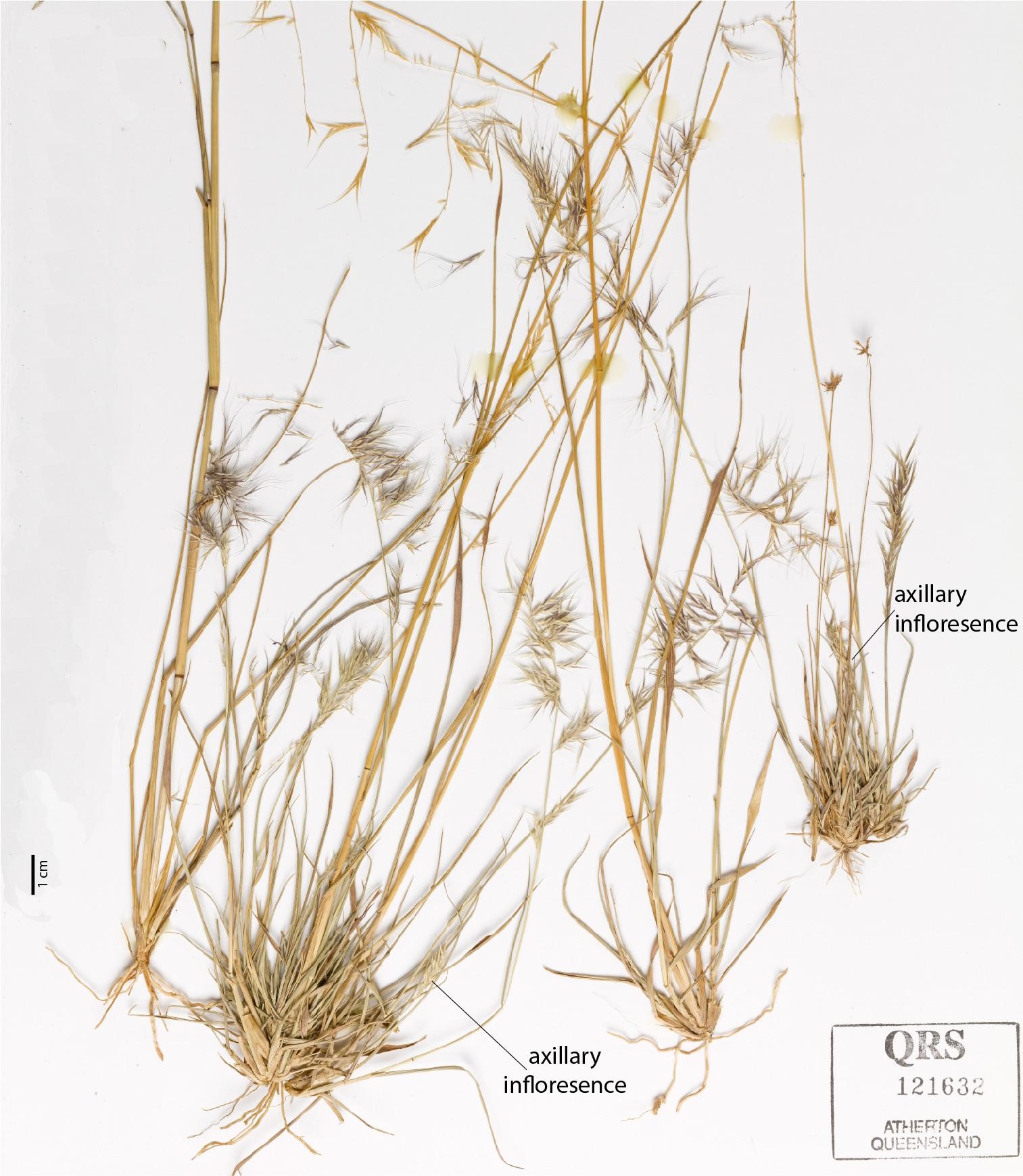
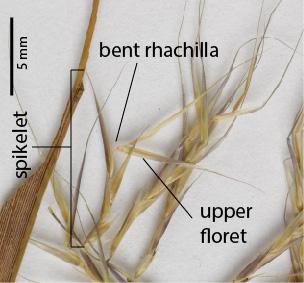
Resources
AVH (2018) Australia’s Virtual Herbarium, Council of Heads of Australasian Herbaria, <http://avh.chah.org.au>, accessed 8 Feb 2018.
Nightingale, M.E. & Weiller, C.M. in Mallett, K. (ed.) (2005), Ectrosia. Flora of Australia 44B: 438-439, Fig. 66B-C
Simon, B.K. & Alfonso, Y. (2011) AusGrass2, http://ausgrass2.myspecies.info/accessed on [8 February 2018].

